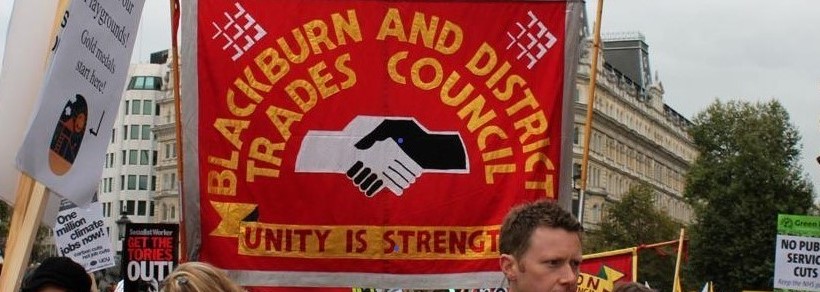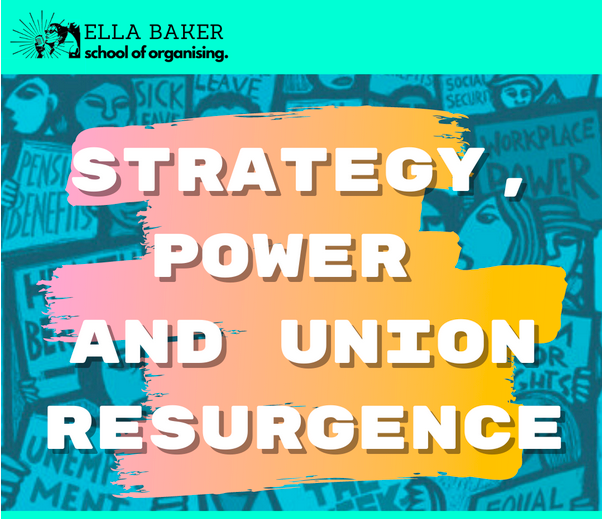Most Trade Unionists would agree that one of the big issues facing us in Britain today is the decline in Trade Union membership since the 1970s.
One of the reasons we have partnered with the Ella Barker School of Organising to run an online session on Tuesday 3rd May:
Strategy, Power and Union Resurgence (actionnetwork.org)
is the hope that it will boost interest and enthusiasm for organising.
Our concern is not just a case of our wanting to build our organisations for selfish reasons. We believe that the current “cost of living crisis” is taking place in a wider context – outlined by three realities. In Britain, as in many other OECD countries, a decline in the “wage share” of GDP has been strongly associated with growing inequality. We now have a “higher Gini coefficient” – ie. The income share for the worst off has grown smaller, whilst that of the better off has grown larger. We agree with the authors of the 2009 book “The Spirit Level” that this has had a detrimental impact on many aspects of our society.
We are not alone in seeing these features as having roots in the decline of Trade Union membership and influence. As the chart below (from Howard Reed’s 2013 LSE Blog “How can the UK boost the wage share?”) shows, between 1960 and 1980 the share of wages in national income fluctuated between around 58 and 61 percent (apart from a brief upward spike in the mid-1970s) but declined sharply in the early 1980s and has been below 56 percent since 1982, falling as low as 51 percent in the late 1990s. Meanwhile, the profit share (operating surpluses as a percentage of national income) rose from 24 percent in 1980 to 28 percent in 2011:
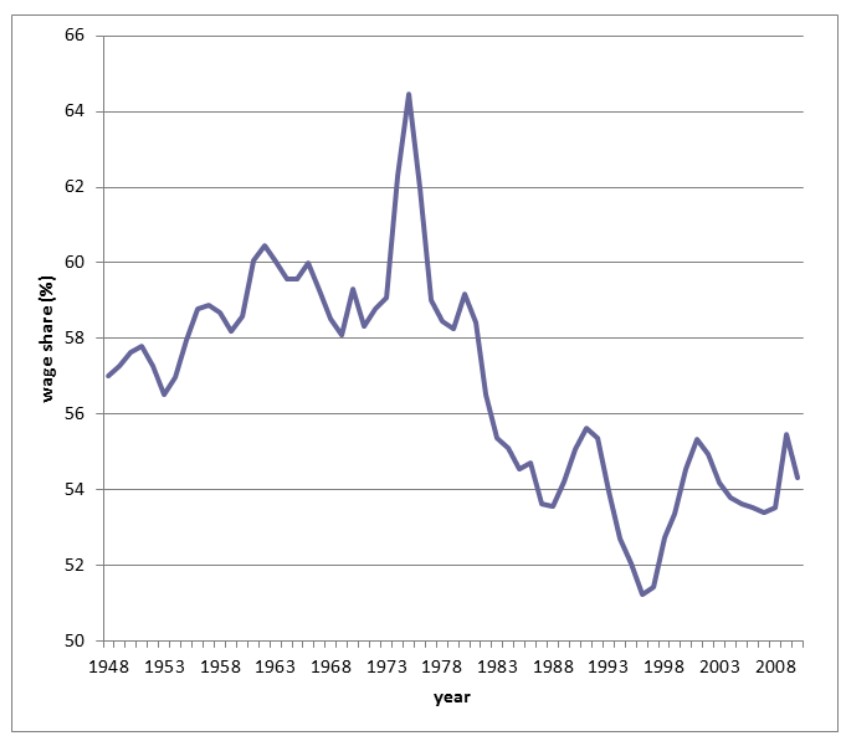
The ILO and the OECD in “The Labour Share in G20 Economies” (2015) came to a similar conclusion:
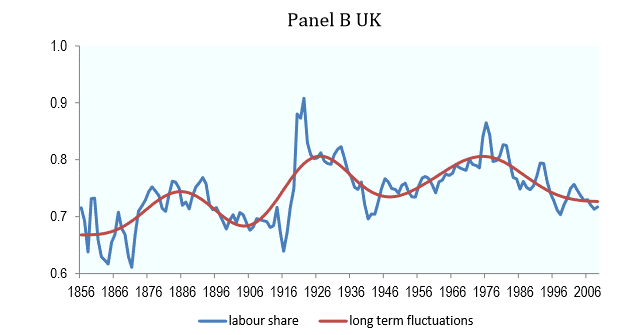
The consequences for inequality can be seen from this “Statista” chart:
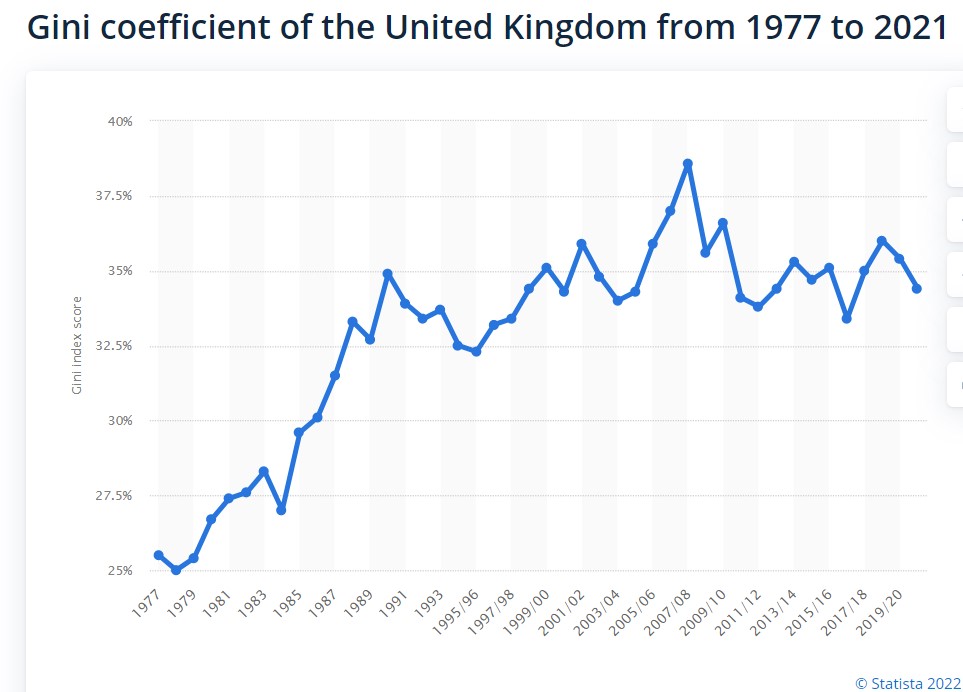
Howard Reed, in the Blog mentioned above, wrote: “Why has the wage share declined? The evidence suggests that while skill-biased technological change and globalisation have played some role, labour market reforms promoted by the OECD and other neoliberal economic commentators – in particular the reduction in trade union and collective bargaining coverage in the workplace – are the most important explanation”.
In a 2018 discussion paper for the IPPR (“Power to the People”), Joe Dromey commented: “Achieving better wages and working conditions as part of a new growth model will require a renaissance of collective bargaining and a growth in trade union membership. The decline of the union movement has contributed to a growing imbalance of power in the economy, and a consequent decline in the share of national income going to labour and an increase in inequality. The state should not be agnostic about the decline of the union movement; public policy should seek to support a renaissance in collective bargaining at sector and firm level, and to reverse the decline in union membership”.
Even the OECD observed: “The decline in union density – the number of trade union members as a percentage of total employees or as a percentage of total employment – in many developed economies has often been linked to the weakening of workers’ bargaining power, negatively affecting their ability to negotiate a larger share of productivity growth as labour compensation”.
The Institute of Employment Rights have compared the British Gini Coefficient with the declining coverage of collective agreements, and found a startling correlation:

Sarah Glenister, the National Development Officer at the Institute, has commented “Much contemporary research has linked strong trade unions to higher economic productivity, lower economic inequality, and better social mobility. The result is a healthier population, a happier population, with lower levels of crime” (“Tribune”, October 2019).
Alongside reinstalling the goal of full employment, increasing Trade Union density can help us achieve a fundamental shift in the balance of economic and social power and influence, away from the dominance currently enjoyed by boardrooms, big business and the City.
